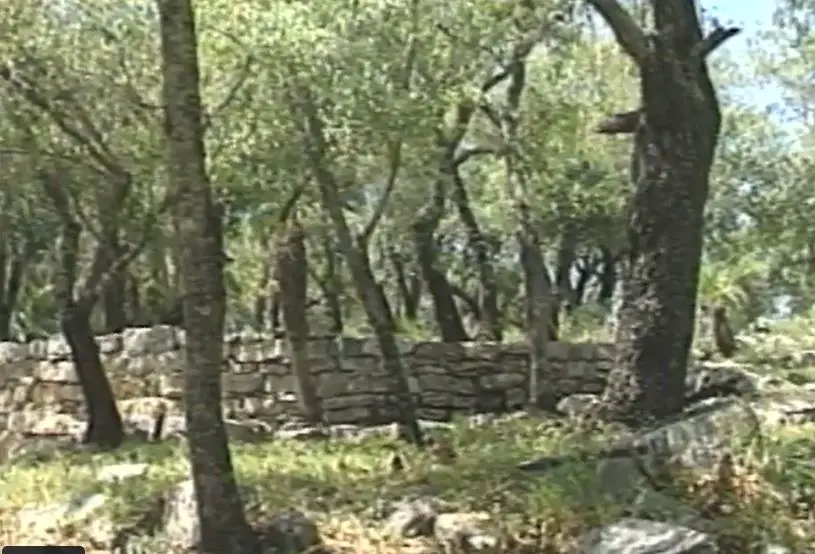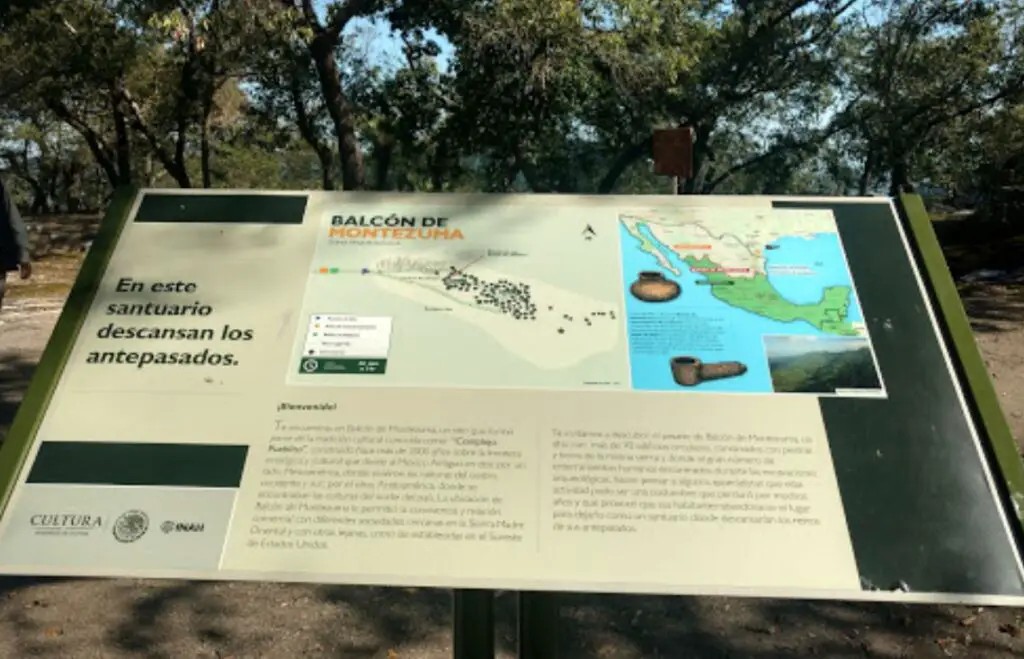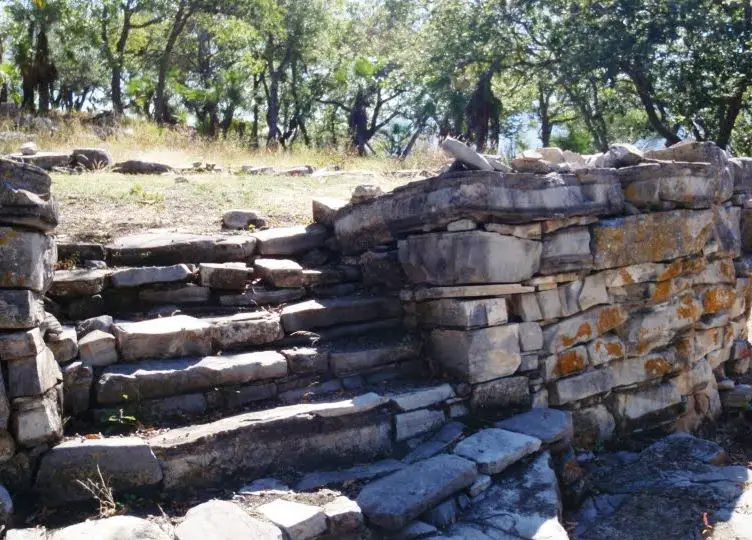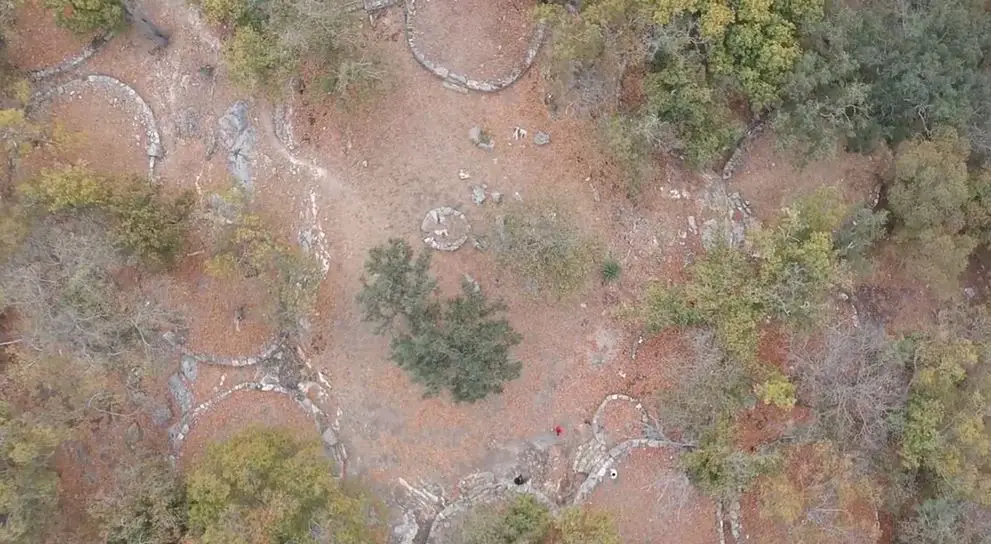Podcast: Play in new window | Download
Subscribe: Apple Podcasts | RSS
 When people think of the high civilizations that thrived in ancient Mexico for thousands of years, things like the pyramids of the Maya or the temples of the Aztecs usually come to mind. The ruins of the magnificent ancient cities of Mexico do not only exist in the central part of the country or in the jungles of the Yucatán, however. There are remnants of gigantic urban centers and fortified capitals of independent kingdoms on the fringes of what can be called Mesoamerica. One such site is called Balcón de Montezuma, located in the modern Mexican state of Tamaulipas, one of the states that borders the US at Texas. Who built this city and why was it located so far north?
When people think of the high civilizations that thrived in ancient Mexico for thousands of years, things like the pyramids of the Maya or the temples of the Aztecs usually come to mind. The ruins of the magnificent ancient cities of Mexico do not only exist in the central part of the country or in the jungles of the Yucatán, however. There are remnants of gigantic urban centers and fortified capitals of independent kingdoms on the fringes of what can be called Mesoamerica. One such site is called Balcón de Montezuma, located in the modern Mexican state of Tamaulipas, one of the states that borders the US at Texas. Who built this city and why was it located so far north?
As there is no writing associated with this site, no one knows the original name of Balcón de Montezuma, which means in English, “Balcony of Montezuma.” The Spanish gave the ruined city its current name because at the site there exists a stone balcony that overlooks a canyon in the sierras affording breathtaking views of the Tamaulipas countryside. Some locals call the ruins Balcón de Chiue. The latter word chiue comes from a forgotten indigenous language and no one knows its meaning. In some older Mexican research materials, the city is known as “Los Indios.” Unique to any ancient city in Mexico, Balcón de Montezuma is in the middle of an oak forest, the type of oaks present being holly oaks also known as evergreen oaks.
Archaeologists classify Balcón de Montezuma as part of the Pueblito Cultural Complex, which developed on the northeastern fringes of Mesoamerica. The Pueblito Cultural Complex is characterized by stone-built architecture, sophisticated ceramics, agriculture, and complex religious ceremonies. Some researchers include Balcón de Montezuma and the Pueblito Cultural Complex as part of what is called Aridoamerica instead of Mesoamerica, but there are many aspects of this site that would tie it directly to the major civilizations to the south which would classify it as one of the northernmost outposts of Mesoamerican civilization. Some scholars point out that this region is a clear example of a frontier cultural complex, since although it experienced its own form of development, it also had similarities with its neighbors, the Huastecs to the south. In the literature Balcón de Montezuma is often referred to as a Huastec site, but this may be a mistake. The Huastecs were an offshoot of the Maya which migrated hundreds of miles to the north out of the Maya heartland some three thousand three hundred years ago. While Balcón de Montezuma does show some Huastec influence, as a frontier city it also shows influence from the ancient cultures inhabiting what is now known as the southeastern United States, specifically Texas. The site was occupied and abandoned several times throughout its history. Initial settlement began around 400 BC. It appears that the final abandonment of the city took place sometime near 1200 AD right around the same time as the collapse of the Toltec civilization farther south. As Balcón de Montezuma is located some 400 miles north of the Toltec heartland, many believe there is little or no connection between the two areas.
 So, what does this site look like? As mentioned earlier, Balcón de Montezuma is set in the mountains, the Sierra Madre Oriental in the modern Mexican state of Tamaulipas, amid a thick oak forest. The site was built in harmony with the environment with hundreds of thousands of stones sourced locally to build the many structures that make up the city. The site sits almost at 4,000 feet above sea level on a mostly flat surface at the summit of a mountain. Most of the buildings at Balcón de Montezuma are circular. From above, the site looks like an Anasazi ruin found in what is now known as the American Southwest or is perhaps reminiscent of a medieval European fortress complex with its ruined towers. Had this circular building phenomenon been present in a site deeper into Mexico, archaeologists would probably conclude that Balcón de Montezuma was a site dedicated to the ancient god of wind, Ehecatl. As there are nearly 100 circular buildings in this unique “lost city,” this is most likely not the case, although no representations of local gods have been found so far at the site. The circular formations were more practical or culturally specific to the region. There are two plazas here oriented on an east-west axis around which most of the 100 round structures are clustered. The round structures are referred to as “plinths” in the literature, which essentially means they were bases or foundations on which buildings were built. They measure anywhere from 24 to 36 feet across. The cores of these plinths were built from earth and stone and were clad with juxtaposed blocks of limestone that were mostly rectangular in shape. Primarily, houses and temples were built on top of the plinths and their walls were made of woven branches packed with clay and earth. The roofs were thatched with fronds from the short palm trees that grow among the oaks in this region of the sierras. Each plinth has a short stairway leading to it, comprised of 3 to 5 steps. Archaeologists note that the lower stairs are wider and fan out, which was most likely done for decorative or aesthetic purposes. Researchers believe that the original entrance to the city was on the western hillside where there is currently in ruin 80 steps which would have looked impressive to the traveler visiting the city in ancient times.
So, what does this site look like? As mentioned earlier, Balcón de Montezuma is set in the mountains, the Sierra Madre Oriental in the modern Mexican state of Tamaulipas, amid a thick oak forest. The site was built in harmony with the environment with hundreds of thousands of stones sourced locally to build the many structures that make up the city. The site sits almost at 4,000 feet above sea level on a mostly flat surface at the summit of a mountain. Most of the buildings at Balcón de Montezuma are circular. From above, the site looks like an Anasazi ruin found in what is now known as the American Southwest or is perhaps reminiscent of a medieval European fortress complex with its ruined towers. Had this circular building phenomenon been present in a site deeper into Mexico, archaeologists would probably conclude that Balcón de Montezuma was a site dedicated to the ancient god of wind, Ehecatl. As there are nearly 100 circular buildings in this unique “lost city,” this is most likely not the case, although no representations of local gods have been found so far at the site. The circular formations were more practical or culturally specific to the region. There are two plazas here oriented on an east-west axis around which most of the 100 round structures are clustered. The round structures are referred to as “plinths” in the literature, which essentially means they were bases or foundations on which buildings were built. They measure anywhere from 24 to 36 feet across. The cores of these plinths were built from earth and stone and were clad with juxtaposed blocks of limestone that were mostly rectangular in shape. Primarily, houses and temples were built on top of the plinths and their walls were made of woven branches packed with clay and earth. The roofs were thatched with fronds from the short palm trees that grow among the oaks in this region of the sierras. Each plinth has a short stairway leading to it, comprised of 3 to 5 steps. Archaeologists note that the lower stairs are wider and fan out, which was most likely done for decorative or aesthetic purposes. Researchers believe that the original entrance to the city was on the western hillside where there is currently in ruin 80 steps which would have looked impressive to the traveler visiting the city in ancient times.
 There seems to be an overabundance of burials at Balcón de Montezuma. Many of the burials are found under the plinths and under walkways and roads. While burying the dead underneath the floors of homes was quite common throughout ancient Mexico, archaeologists find the other more random burials in public places to be very odd. One theory is that after the city had been abandoned for many years and had earned a designation of “ghost town” by the remaining local indigenous population, Balcón de Montezuma may have been used as a cemetery. Regarding the bones found during the city’s formal occupation of 400 BC to 1200 AD, some of the findings have been quite interesting. Researchers concluded that the earliest inhabitants of the site were tall and had a very robust appearance. The latter inhabitants, perhaps occupying the city after a previous collapse, were people of medium stature and thinner build. Unlike other sites in ancient Mexico, there is a lack of what would be called “elite burials” here complete with elaborate funerary offerings including luxury goods and items brought from far away on long-distance trade routes. In the late 1980s archaeologists discovered skeletons of children under the age of 4 with dental mutilations on what would be called their “baby teeth” or “deciduous teeth.” Dental alterations are quite common in cultures found throughout the world and across time and are done for various reasons, usually for ceremonial purposes or for ornamentation. These alterations take time and effort and are permanent. Never before in any other archaeological site in the entire world have elaborate dental alterations been found in the impermanent “baby teeth” of individuals. Researchers are baffled by what this practice meant to the early inhabitants of Balcón de Montezuma.
There seems to be an overabundance of burials at Balcón de Montezuma. Many of the burials are found under the plinths and under walkways and roads. While burying the dead underneath the floors of homes was quite common throughout ancient Mexico, archaeologists find the other more random burials in public places to be very odd. One theory is that after the city had been abandoned for many years and had earned a designation of “ghost town” by the remaining local indigenous population, Balcón de Montezuma may have been used as a cemetery. Regarding the bones found during the city’s formal occupation of 400 BC to 1200 AD, some of the findings have been quite interesting. Researchers concluded that the earliest inhabitants of the site were tall and had a very robust appearance. The latter inhabitants, perhaps occupying the city after a previous collapse, were people of medium stature and thinner build. Unlike other sites in ancient Mexico, there is a lack of what would be called “elite burials” here complete with elaborate funerary offerings including luxury goods and items brought from far away on long-distance trade routes. In the late 1980s archaeologists discovered skeletons of children under the age of 4 with dental mutilations on what would be called their “baby teeth” or “deciduous teeth.” Dental alterations are quite common in cultures found throughout the world and across time and are done for various reasons, usually for ceremonial purposes or for ornamentation. These alterations take time and effort and are permanent. Never before in any other archaeological site in the entire world have elaborate dental alterations been found in the impermanent “baby teeth” of individuals. Researchers are baffled by what this practice meant to the early inhabitants of Balcón de Montezuma.
The excavation of this site is relatively new. As Balcón de Montezuma is in a wilderness area it has attracted very little attention until recently and hasn’t been completely destroyed by looters. In the early 1980s local archaeologists from Tamaulipas began exploring the site and making preliminary reports on it. By the late 1980s, the National Institute of Anthropology and History, or INAH, out of Mexico City started to take a more serious interest in this unique ancient urban center. Mexican archaeologist Jesús Nárez Zamora headed the formal investigations beginning in  1988 which took place across three phases. In Phase One, archaeologists mapped the city and cleared vegetation away from the main structures. Phase Two included the first formal excavations ever undertaken at Balcón de Montezuma. It was during this phase that archaeologists discovered the many burials and a massive amount of clay pipes of various shapes and sizes, along with other small artifacts of clay and stone. Phase Three, which ended in July of 1990, included analysis done by biologists and physical anthropologists, along with research from other scientists that culminated in a multi-volume report that was sent back to Mexico City. Since then, there has been very little scholarly research done at the site, although now it is open to tourists and is free to enter. Unlike the more popular or larger ancient ruins found throughout Mexico, there are no services or gift shop here, however. The Balcón de Montezuma archaeological zone is mostly frequented by locals or by residents of Tamaulipas’ capital city looking for a brief weekend getaway. There are no plans and no budget for any further improvements to be made here or for any more research to be done at the site in the immediate future.
1988 which took place across three phases. In Phase One, archaeologists mapped the city and cleared vegetation away from the main structures. Phase Two included the first formal excavations ever undertaken at Balcón de Montezuma. It was during this phase that archaeologists discovered the many burials and a massive amount of clay pipes of various shapes and sizes, along with other small artifacts of clay and stone. Phase Three, which ended in July of 1990, included analysis done by biologists and physical anthropologists, along with research from other scientists that culminated in a multi-volume report that was sent back to Mexico City. Since then, there has been very little scholarly research done at the site, although now it is open to tourists and is free to enter. Unlike the more popular or larger ancient ruins found throughout Mexico, there are no services or gift shop here, however. The Balcón de Montezuma archaeological zone is mostly frequented by locals or by residents of Tamaulipas’ capital city looking for a brief weekend getaway. There are no plans and no budget for any further improvements to be made here or for any more research to be done at the site in the immediate future.
Balcón de Montezuma leaves us with more questions than it has answers to. Why was the city built in the first place? What caused such a remote place to be occupied off and on for so many centuries? Why did its ancient residents practice dental augmentation on infants? Perhaps researchers will piece it all together and figure it all out, but for now this lost city of the sierras remains shrouded in mystery.
REFERENCES
INAH Web site
